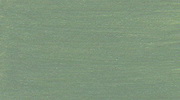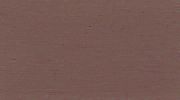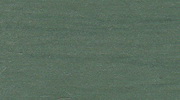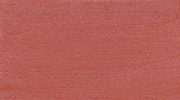|
|
HISTORICAL MINIATURES BY GEORGE GRASSE |
|
|
|
HISTORICAL MINIATURES BY GEORGE GRASSE |
|
NIEUPORT 11 "Bebe" N.1116 of Escadrille N.124 by George Grasse
SPECIAL HOBBY 1:32 SCALE PLASTIC KIT #SH-32015 LIMITED EDITION

%20Nieuport%2011%20Final%2001.jpg) |
| Nieuport 11 Serial Number N.1116 flown by Caporal Kiffin Rockwell, VMI 1912, French Escadrille N.124 "Lafayette", May 1916. |
|
CONSTRUCTION PHOTO No. 1
10 January 2015 |
%20Nieuport%2011%2001.jpg) |
| FUSELAGE BEGINNINGS: The kit has few parts as did the little Nieuport 11 "Bebe". I inadvertently forgot to photograph one or two stages in the construction of the cockpit interior. What you see above is the beginning of the model's construction. The lower wings were "pinned" and glued in place. The horizontal tailplane was glued right to the top of the rear end of the fuselage but I had to be sure that both the wings and tail were aligned. Same with the rudder. There are two projections near the left wing tip - these are Gaspatch turnbuckles, probably the best on the market cast in hard metal and quite durable. More on these later during rigging. |
|
CONSTRUCTION PHOTO No.
2
15 January 2015 |
%20Nieuport%2011%2002.jpg) |
| COCKPIT DETAILS: Cockpit interior for what it's worth. I'm really sorry about not showing the complete interior detail. |
|
CONSTRUCTION PHOTO No.
3
26
January 2015
|
%20Nieuport%2011%2003.jpg) |
|
LANDING GEAR: The kit's plastic landing gear struts were replaced with my brass tube version. I selected the appropriate tube size, bent each strut to the correct angle, inserted brass rod down each leg, and gently pounded the strut into an aerodynamic oval shape. Holes were drilled into the model's landing gear fitting. The brass rods were cut to length thus serving as excellent anchors for a rigid landing gear system. The kit's landing gear foiled axle had the plastic axles cut off and drilled out to take a brass rod at each end. Then, it was dropped into the "V" of each strut, tacked with super glue, and wound with fine electrical wire that mimics the elastic shock absorber cords but, more importantly, binds the axle to the strut, with super glue, of course. |
|
PAINTING NOTES ON THE FRENCH 4-COLOR 1916 CAMOUFLAGE SCHEME In 1915, the French developed the "enduit metallise" doping process for fabric with the main purpose to protect the fabric from the elements especially the effect of damaging sun light over time. At the heart of the doping formula was aluminum powder which was shown to greatly reflect light and therefore greatly improve the longevity of fabric. Whatever the pigmentation formula, 42% of it was aluminum powder. Dopes were prepared in various colors or, in the case of clear doped linen, without colored pigments. The formulas for fabric were generally termed "Acellos" derived as a brand name by the company that patented the "enduit metallise" process. Wood and metal surfaces (engine covers, panels, struts, metal fittings, etc) were produced using the same ratio of colored pigments but substituting light gray instead of the aluminum powder. This formulation was termed "Ripolin". It is not known for sure how many Nieuport 11s were finished in the four-color camouflage scheme or the overall aluminum finish. The reason for this appears to be the well-known and divided camps as to camouflage on aircraft or not. The "not" camp simply thought that camouflage for fighters was not necessary. As aircraft became available for escadrilles, they could choose how many of which scheme they wanted, or so it would seem. At any rate, of concern here is the realization that available hobby paints that represent "accurate" shades of French World War 1 1916 and 1918 camouflage are, my opinion, based on "Ripolin" concoctions because the somewhat faint appearance of aluminum flake is NOT visible in any of these paint products. The pioneer in revisionist French camouflage research is Alan Toelle. In the mid-2000s, he presented the revelation that what was thought to be a two-color green and brown 1916 camouflage was convincingly shown to be a four-color scheme of two greens and two browns. The reader should review his subsequent articles published in Windsock Worldwide (now Windsock International), Volume 23, Issues No. 5 and 6. The basis of his color theory that is important to modelers is the high percentage of aluminum powder as a consistent 42% of the pigment solids and the obvious effect it has on the four upper surface camouflage "Acellos" colors all of which show a distinct but subtle reflectivity on the fabric surface. Further, his research has pretty much discovered the ratio of all of the French pigments that go into each of the different colors including light blue for undersurfaces and the shades of clear doped linen and beige as used on other French aircraft of the period. To formulate the 1916 "Acellos" group, I had to mix my own paints based on the Ronny Bar color profiles shown in the two installments. Although there exits a table of pigment percentages for the five-color scheme of 1918 (see Windsock World War Centenary, Spring 2014 - this is Windsock's new title), it or even one for 1916 if it exists cannot be used by the modeler because one does not have access to those pigments and anything you substitute will be a wild guess, at best. In other words, if an authoritative extant French table says, for example, Prussian Blue, just what, exactly is its shade and viscosity. I tried four of the colors in the 1918 palette using the French ratios and guessed at "orange chrome", "yellow chrome", Prussian blue, etc. and came up with nothing like the shades depicted in the Ronny Bar and Alan Toelle color profiles of the SPAD 13 and Nieuport 28. I produced my own set of paints using Vallejo for some or Mister Kit and Vallejo for others. When you look at Photos #2 and #3 above, you will be viewing my first pass at all four colors and, to my mind's eye, they do not look right. I did a lot of adding of colors to doctor my 1916 palette to my liking. After all, I get enjoyment from the way I perceive and then finish my models. They "look" right! (see Photos #4 and #5, below) I will present my palette at the end of the last "Construction Photo" below. However, the swatches you see on your computer or if you download them will not quite look right when compared to the Windsock artwork described above. My last bit of advice is that you will need base colors of both the "Acellos" palette and the "Ripolin" palette. You cannot enhance one of your mixed "Acellos" colors to get a "Ripolin" color because the amount of white metallic paint you used to make "Acellos" cannot be diluted out of the shade you want. On the other hand, you can make a "Ripolin" palette and from that base, on a separate part of your palette or tin, mix in your white metal color to get the effect of the aluminum powder. Fortunately for the early Nieuport 11s and 16s, there is little in the way of metal or wood that was painted in the camouflage colors. In fact, they were painted in Horizon Blue, a light shade for the aircraft's interior parts and a darker shade for the exterior parts. For example, on my Nieuport 11 herein discussed, the "cabane" struts are dark horizon blue but the outer wing struts are natural wood with dark Horizon Blue fittings. Feel free to download any of my photos or color swatches. To Continue . . . . . . . . . . . |
|
CONSTRUCTION PHOTO No.
4
17 February 2015 |
%20Nieuport%2011%2004.jpg) |
| PAINTING - Part 1: The pattern was taken from the Ronny Bar two-page color artwork that appeared in the 2007 issue of Windsock Worldwide, Volume 23, No. 5, as a centerfold spread. Since all four-color schemes were hand-painted by brush AND they followed general guidelines, no two aircraft were finished in exactly the same way. In general, they were quite similar. For example, the fuselage on both sides and the top from front to rear was Red Brown, Light Green, Dark Green, and Dark Brown at the tail. |
|
CONSTRUCTION PHOTO No.
5
21 February 2015 |
%20Nieuport%2011%2005.jpg) |
|
PAINTING
- Part 2:
The top wing generally follows the Nieuport factory-applied
scheme in the sequence, left to right, Dark Green, Light
Green, Dark Brown, Red Brown, Dark Brown, Light Green, and
Red Brown. Note the Dark Horizon Blue for the metal
aileron hinges and the metal edges for the aileron cranks.
Satin polyurethane will be over sprayed on the model to even
out the paint scheme and prepare the surface for decals.
For sure, there were variations but note that there are few clear views of top wings. Even so, photos make the paint scheme look almost sprayed but this is due to the photography of the time, lighting conditions, wear-and-tear of the aircraft subject, dirt, castor oil, and sometimes deliberate "additions" to enhance camouflage. Just do they best you can to your own satisfaction - it's for your collection. |
|
CONSTRUCTION PHOTO No.
6a
14 March 2015 |
%20Nieuport%2011%2006a.jpg) |
| PAINTING - LEFT SIDE VIEW: This view shows the addition of the windscreen, some of the detailing to panel lines, and painting of the rudder insignia stripes. You can see the Gaspatch turnbuckles on the upper surface of the left lower wing. |
|
CONSTRUCTION PHOTO No.
6b
14 March 2015 |
%20Nieuport%2011%2006b.jpg) |
| PAINTING - RIGHT SIDE VIEW: This view shows the same additions as the previous photos. |
|
CONSTRUCTION PHOTO No.
7
7 August 2015 |
%20Nieuport%2011%2007.jpg) |
| DECALS, THE LETTER "R": This view shows two of the special decals I created for this model. The white "R" represents the personal insignia of the pilot, Caporal Kiffin Rockwell, Escadrille N.124 "Lafayette". The serial number black "1116" is the first Nieuport 11 assigned to Rockwell in the early Spring of 1916. The white "R" is painted acrylic white over the blue color of the decal since I cannot print in white. The font is Bell MT and the font size is 78. |
|
CONSTRUCTION PHOTO No.
8a
14 August 2015 |
%20Nieuport%2011%2008a.jpg) |
| DECALS, "1116 Type 11", TAIL UNIT: The underside of the tail unit shows the application of my homemade decals identifying the specific aircraft to which these components belong. The font is Century Schoolbook font size 3. |
|
CONSTRUCTION PHOTO No.
8b
14 August 2015 |
%20Nieuport%2011%2008b.jpg) |
| DECALS, "1116 Type 11", WINGS: The underside of the tail unit shows the application of my homemade decals identifying the specific aircraft to which these components belong. The font is Century Schoolbook font size 3. |
|
CONSTRUCTION PHOTO No.
9
24 September 2015 |
|
|
| STRUTS: The model is ready for struts and this photo shows them in place. Note that the rear fuselage strut is brass tubing with a metal rod that was flattened and then bent to the same shape as the kit part. This was done for added strength. |
|
CONSTRUCTION PHOTO No.
10
12 October 2015 |
%20Nieuport%2011%2010.jpg) |
| TOP WING ASSEMBLY -STEP ONE: Before attaching the top wing, the kit's rear inverted "V" cabane strut was replaced with a brass tube and rod structure for strength. All of the rigging wires were installed into the top wing attached to Gaspatch metal turnbuckles. The rigging was pulled aside and taped. The initial gluing involved only the cabane struts as shown above. |
|
CONSTRUCTION PHOTO No.
11
19 December 2015 |
|
|
| RIGGING: All of the .005 monofilament rigging threads have been attached. Although this size is too small for this 1:32 scale model, painting the rigging in "French blue horizon" made the diameter more in scale. I used Andrea's ANXC24 Union Blue which I used for all non-fabric parts (hinges, strut fittings, etc). |
|
CONSTRUCTION PHOTO No.
12
19 December 2015 |
|
|
| TAIL UNDERSIDE: The tailskid shaft has been painted in natural wood with a metal skid painted in "French horizon blue". Small decals were made for the "1116 Type 11" markings that appeared both sides of all individual flying surfaces. Lastly, at this step, the short tail struts cut from Strutz material were attached (the kit parts were discarded). Of note is the beginning of painting the flying surface edging tape. Some modelers would apply decal strips to simulate the tape but I chose to paint it on using "French horizon blue". |
|
CONSTRUCTION PHOTO No.
12a
21 December 2015 |
|
|
| ENGINE DETAIL: This photo shows the "first" pass at engine detailing and painting. The "too-bright" copper color was toned down with a darkened wash of dark brown. Other components, as skimpy as they were, will be highlighted with chrome silver. |
|
CONSTRUCTION PHOTO No.
13
29 December 2015 |
|
|
| ENGINE AND COWLING: A metal shaft was glued to the "firewall" as shown in photo #11 above. The LeRhone 80 hp rotary engine was placed onto the shaft and the cowling was glued into position. When dry, the two small cowling side covers were added. The entire cowling was painted in Vallejo Natural Steel. |
|
CONSTRUCTION PHOTO No.
14
29 December 2015 |
|
|
| LEWIS GUN WING MOUNT: I decided to scratch-build the Lewis gun mount just to have something more substantial than was offered in the kit. The long "V" support was made from brass rod. Another piece of brass rod with a loop was attached to the "V" support and glued to holes drilled into the top wing. The kit furnishes the vertical support piece in thin, flimsy resin. I cut off the lower extended portions and glued them to the vertical support, front and back. This photo shows the structure in place and primed for painting. |
|
CONSTRUCTION PHOTO No.
15
29 December 2015 |
|
|
|
LEWIS GUN AND FLYING SURFACE
EDGING TAPE:
The Lewis gun supplied in the kit was notched on the
underside to fit onto the "hump" of the vertical post
(remember the "loop" I made to hook onto the "V" support).
I glued a small diameter piece of piano wire to the vertical
post and a corresponding hole on the underside of the Lewis
gun. A thin piece of piano wire was bent into the
configuration of the forward rest for the Lewis gun.
The gun was painted with a mix of Vallejo VC0863 Gun Metal
Gray and generic semi-glass black with a tiny droplet of Vallejo VC0800 Gun Metal Blue. The support structure was painted in old Andrea ANAC54 Union Blue which, to me, is quite close to "French horizon blue", the color used to paint metal and wood components. 1 This view clearly shows the flying surfaces edging tape painted in "French horizon blue". I did not use decal strips to simulate the tape. Rather, I hand-painted the color directly onto the top and bottom edges of the flying surfaces. 2 |
%20Nieuport%20Finished%2001%20Left%20Side.jpg) |
%20Nieuport%20Finished%2002%20Right%20Side.jpg) |
%20Nieuport%20Finished%2003%20Left%20Front.jpg) |
%20Nieuport%20Finished%2004%20Left%20Rear.jpg) |
%20Nieuport%20Finished%2005%20Right%20Rear.jpg) |
%20Nieuport%20Finished%2006%20Right%20Front.jpg) |
FOOTNOTES:
1. Lewis gun note: In Over the Front, Volume 24, Issue 4 (Winter 2009) on pages 338-339, Alan Toelle reviews the variety of Lew Guns known to have been used on Escadrille N.124 "Lafayette" Nieuports 11 and 16. It is confirmed that Corporal Kiffin Rockwell flying Nieuport 11 "1116" on which this model is based used the first model of the Lewis Gun manufactured specifically for aircraft use. This was the BSA Mk. II Lewis Gun which is the type furnished in the kit except that I had to add a brass tube barrel cover (Albion MBT20). Below is an image taken from OTF 24/4, page 337.
%20Nieuport%2011%20BSA%20Mk.%20II%20Lewis%20Gun%20(OTF%2024,%20No.%204,%20page%20337)%20mod.jpg)
2. Flying surfaces edging tape was applied to protect the edges from slipstream action and ground handling. There is no known explanation as to why the taped edges were painted in "French horizon blue" and not painted in the colors of the adjacent areas, e.g., four-color camouflage or underside light blue. If the tape was applied after the camouflage finish, it may have been "prepped" in the blue color as a preservative, then applied, and sealed with varnish. It's possible that the tape was painted after application of the camouflage finish but this would have been immensely time consuming compared to the "prep" method. There is no doubt that the colored tape adds a certain charm to the early Nieuports.
FRENCH 1916 NIEUPORT FOUR-COLOR CAMOUFLAGE "ACELLOS" PALETTE
(My paint swatches don't reproduce well enough below - they should be darker - see top wing photo above)
| LIGHT GREEN | DARK BROWN | DARK GREEN | RED BROWN |
 |
 |
 |
 |
REFERENCES:
Bruce, J. M. Nieuport Fighters Volume 1, Windsock Datafile Special, color profiles and "Colours and Markings" section by Ray Rimmel, scale drawings by Ian Stair. Berkhamsted, UK: Albatros Productions, 1993.
Cooksley, Peter. Nieuport Fighters in Action, color artwork by Don Greer, illustrated by Ernesto Cumpain. Carrollton, Texas: Squadron/Signal Publications, 1997.
Davilla, Dr. James J. and Arthur M. Soltan; illustrated by Carl Ahremark, Martin Digmayer, Colin Owens, Dennis Punnett, and Ian Stair. French Aircraft of the First World War. Boulder, Colorado: Flying Machines Press, 2002.
Franks, Norman. Nieuport Aces of World War 1, Osprey Aircraft of the Aces 33, aircraft profiles by Harry Dempsey, line artwork by Mark Styling. Oxford, UK: Osprey Publications, 2000.
French Escadrille 124 website page - http://albindenis.free.fr/Site_escadrille/escadrille124Lafayette.htm
Toelle, Alan. "Nieuport Camouflage of 1916, Parts 1 and 2", color artwork by Ronny Bar. , Windsock Worldwide, Volume 23, Issues Nos. 5 and 6. Berkhamsted UK: Albatros Productions, 2007.
Toelle, Alan. "Lewis Guns in N.124", Over the Front, Volume 24, Number 4, Journal of the League of World War I Aviation Historians, Winter 2009.
GO TO?